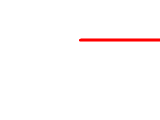bfowler
Double Eagle Member
One thing I found while doing field work yesterday was how much you feet position during your throw dictate your throw. I've seen SW22 tell many people to open or close their stance.
Many time I will pull a little right. I adjusted yesterday by closing my stance a bit and that seemed to have magically fixed it.
We're all trying to snap our hip from facing away from closed (with our right buttcheek to the target) to open (our right hip facing the target). This pulls the shoulders around so that your right shoulder is facing the target. That pulls your arm into the right peck position.
When my feet are perfectly inline (like I'm standing on a white line) with my right hip and right shoulder pointing towards the target my natural rotation for getting me into the above position ends up with my shoulders pointing just off to the right where I end up throwing.
Now, I closed my stance a little so that on that straight white line on the ground my right heel is just to the left of the line and my left toe is touching the left side of the line. So my stance is more staggered. I do my natural hip rotation and my shoulder end up pointing right at the basket and that's where my throw ends up.
We've all heard about when throwing hyzers to take a step (run-up) from the back left corner of the teepad to the front right and reversed for annys. This is done because it naturally puts your feet and thus body into a position so that you end up throwing more right or left. I've found this also works on a smaller scale. If I want a long anny with a short arc I'll take one step towards the right corner of the tee box. I'm not going corner to corner but am still going on that angle, it's just a lot less.
It's much, much, much easier to alter your footwork slightly and throw the same than it is to OAT your wrist or try to lean your body forward to backwards on a straight line to get different lines. The footwork will naturally put your body in the correct position.
I can't tell you how many times I've been throwing an anny or hyzer down a wooded line only to pull or push it too close to the trees on either side. This fixes that because it feels like I'm throwing the same and naturally ever time.
Many time I will pull a little right. I adjusted yesterday by closing my stance a bit and that seemed to have magically fixed it.
We're all trying to snap our hip from facing away from closed (with our right buttcheek to the target) to open (our right hip facing the target). This pulls the shoulders around so that your right shoulder is facing the target. That pulls your arm into the right peck position.
When my feet are perfectly inline (like I'm standing on a white line) with my right hip and right shoulder pointing towards the target my natural rotation for getting me into the above position ends up with my shoulders pointing just off to the right where I end up throwing.
Now, I closed my stance a little so that on that straight white line on the ground my right heel is just to the left of the line and my left toe is touching the left side of the line. So my stance is more staggered. I do my natural hip rotation and my shoulder end up pointing right at the basket and that's where my throw ends up.
We've all heard about when throwing hyzers to take a step (run-up) from the back left corner of the teepad to the front right and reversed for annys. This is done because it naturally puts your feet and thus body into a position so that you end up throwing more right or left. I've found this also works on a smaller scale. If I want a long anny with a short arc I'll take one step towards the right corner of the tee box. I'm not going corner to corner but am still going on that angle, it's just a lot less.
It's much, much, much easier to alter your footwork slightly and throw the same than it is to OAT your wrist or try to lean your body forward to backwards on a straight line to get different lines. The footwork will naturally put your body in the correct position.
I can't tell you how many times I've been throwing an anny or hyzer down a wooded line only to pull or push it too close to the trees on either side. This fixes that because it feels like I'm throwing the same and naturally ever time.
